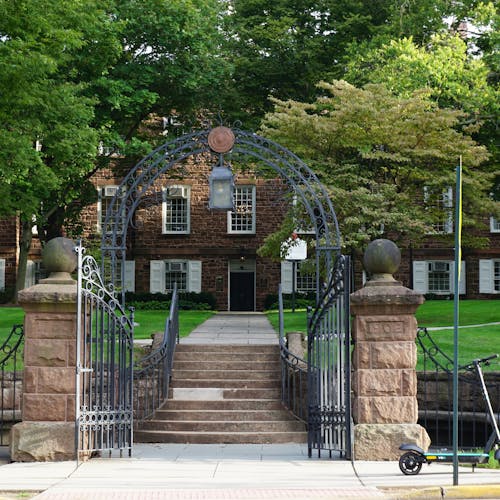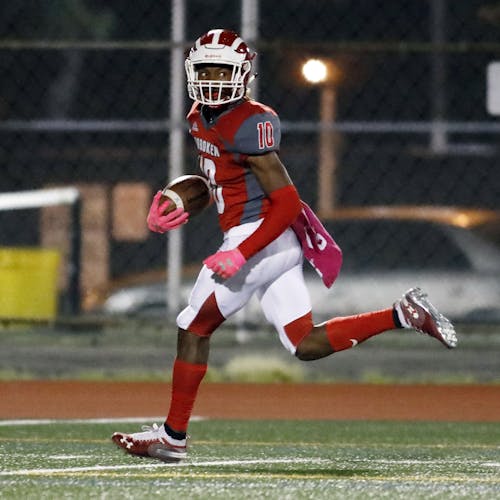The First Amendment: a conversation at Rutgers on how well college students know their rights

Yesterday Rutgers hosted John Villasenor, a senior fellow at the Brookings Institution and a professor at UCLA, to discuss his research on college students' views of the First Amendment and participate in a discussion on free speech.
Villasenor conducted a national survey of 1,500 current undergraduate students at U.S. four-year colleges and universities. It included respondents from 49 states and Washington, D.C.
The event was hosted by Undergraduate Academic Affairs and featured a quick presentation by Villasenor followed by moderator questions asked to a panel comprised of two Rutgers students, a Rutgers professor and Villasenor. This was then followed with an open discussion.
It began with a question to the crowd.
“To start, I’m going to just ask for a little audience participation here, the First Amendment confirms or addresses five freedoms, can people tell me what those five are?” Villasenor said to the audience.
The audience answered with the right to speech, assembly, religion, to petition the government and the press. He then asked, what limits does the First Amendment have? Answers included incitement to imminent lawless action, “true threats” and defamation.
Villasenor discussed some results from recent free-speech surveys, including his own.
One question he posed in his survey was “A public university invites a very controversial speaker to an on-campus event. The speaker is known for making offensive and hurtful statements … A student group opposed to the speaker uses violence to prevent the speaker from speaking. Do you agree or disagree that the student group’s actions are acceptable?” according to his report in the Brookings Institution.
Nineteen percent of students surveyed agreed with that statement and 81 percent disagreed, according to the report.
A similar question asked if a student group opposed to the same speaker disrupted the speech “by loudly and repeatedly shouting so that the audience cannot hear the speaker” was acceptable. The survey found that 51 percent of respondents agreed and 49 percent disagreed, according to the report.
He discussed other findings before concluding his presentation. These included information like most respondents thinking online speech should be given the same level of protection as face-to-face speech, and that the majority of people agree on the importance of the First Amendment but less people understand the full contours of it.
“The First Amendment is specifically a constraint on government … the way you practice it is you exercise your right to free speech and respect the right that other people have to free speech,” Villasenor said in an interview about how students who might not fully understand the amendment should go about using it.
The questions that followed addressed aspects of this.
One asked how new technologies will continue to influence and update the complex protections provided by the First Amendment.
Villasenor said in an interview that online speech is easy to do and sometimes does not provide the full context, which can cause misinterpretations.
"If it’s looked at a month or a year later it can have a different impression then it had when it was originally said. So the fact that it’s all sort of living forever in cyberspace kind of complicates things enormously I think," he said.
The questions then shifted into microaggressions, trigger warnings and where people can go from here.
Panelists discussed how words can hurt but that it can also be difficult to define what a microaggression is or how to properly respond to one.
“What can the University do, what can the state do, what can the federal government do to legislate to solve these speech problems, and the answer generally speaking is almost nothing,” said William Field, undergraduate program director in the Department of Political Science and one of the panelists.
Following that he said that people do have an obligation to be as careful and inclusive as they possibly can.
The panelists then took questions from the audience, where one member asked if the fear of being labeled offensive can limit political discourse.
Robert Lazarowitz, a Rutgers class of 1982 alumnus who was in attendance, said in an interview that he thinks it can.
The more people have to be conscious of every word they say and give speech a “litmus test” before they say it, the more people speaking from their heart or expressing their views is going to be hindered, he said.
“Now, clearly we should be civil, but hopefully we bring our civility with us into the conversation to begin with and we don’t have to worry about going too far because most of the time we’re not going to be offensive,” Lazarowitz said. “If somebody gets offended, they might get offended for legitimate or illegitimate reasons, if we see in retrospect (that) we went too far we can apologize and that should be the end of it.”
Villasenor said that going forward, young people can practice free speech by simply exercising their right and being respectful of other people’s First Amendment rights and limitations to the amendment.
“I think understanding those limits puts people, puts us all, in a better position to kind of participate in and contribute to the dialogue,” he said.



